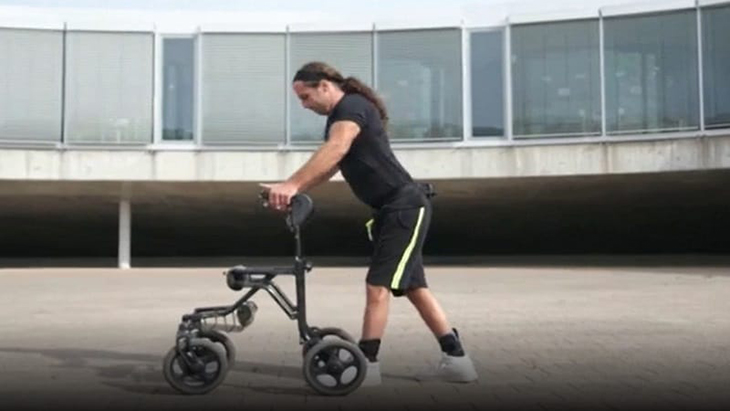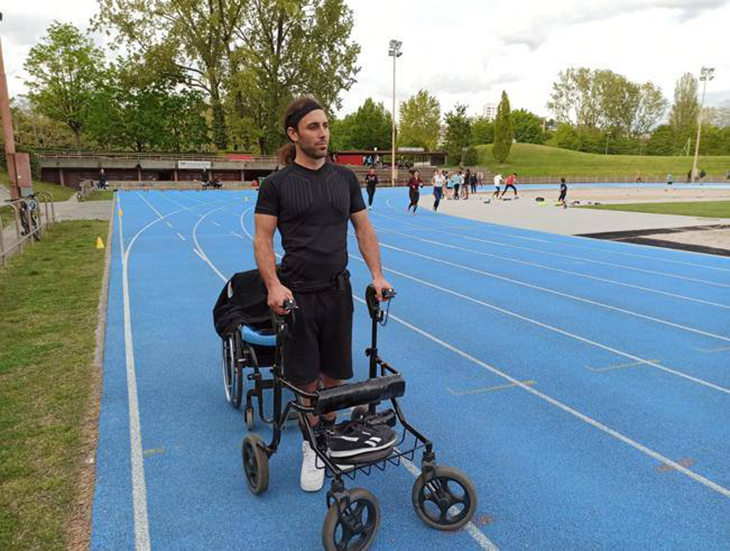
A man who was paralyzed in a motorbike accident that completely severed his spinal cord has done the unthinkable, he’s managed to walk with a wheeled-walking aid by himself.
After his life-shattering diagnosis from his accident, Michel Roccati was told he would never be able to walk again. Doctors told him that, unlike other types of paralysis, no type of therapy could help him, nor would he ever have any type of sensation in his legs.
But after he was given the devasting news, it would seem that he refused to take no for an answer. Eventually, he was given a new medical implant that emits electrical signals into his spinal cord, and just one hour after the implantation, he managed to take some steps with the support of a wheeled-walking aid.

Roccati said in a BBC news report, “I used to box, run, and do fitness training in the gym. But after the accident, I could not do the things that I loved to do, but I did not let my mood go down. I never stopped my rehabilitation. [Now] I stand up, walk where I want to, I can walk the stairs—it’s almost a normal life.”
With most cases of paralysis end in major damage to the spinal column, which prevents the signals from the brain reaching the extremities of the body. But much like a WiFi repeater, the implant helps carry the signals further down body. Notably, the surgery that installs the device is quite complex, and requires the connection of fibers to individual nerve sections to work.
Moreover, it also has strong artificial intelligence software which gives out signals just like how the nervous system biology would. It’s then controlled by software on a tablet that has pre-set programs that help train the electrodes on the implant, which then command the trunk and legs to do particular types of movements.
As published in a paper in Nature Medicine, researchers share, “Within a single day, activity-specific stimulation programs enabled these three individuals to stand, walk, cycle, swim, and control trunk movements. Neurorehabilitation [created] sufficient improvement to restore these activities in community settings, opening a realistic path to support everyday mobility.”
Dr. Ram Hariharan at the Northern General Hospital of Sheffield, UK, who backed the study as well.
He told BBC, “I have not heard of any study where they have put in an implant [into a patient with a complete spinal cord cut] and demonstrated muscle movements and improving balance, enough to stand and walk. They have done something that has not been done before.”
Although the therapy is not yet complete, says the researchers, since the device is said to be too complicated to be used in everyday settings at the moment. But what these rehabilitations do is exercise the dormant leg muscles in order to improve mood, health, as well as help restore the little bits of movement capabilities that people with paralysis have.
It was Professor Grégoire Courtine that led the team in developing this technology. He believes that if it is used in conjunction with stem cell regeneration, later on when the technology has been further developed, it may just help patients with life-long paralysis have some sense of normalcy in life.
Take a look at the video below to see more about Roccati and his second lease on life.



